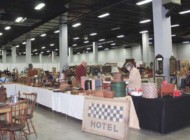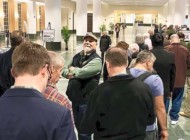-1024x556.jpg)
The big sale of the show for Bernard & S. Dean Levy Inc was the George C. Curtis Philadelphia Chippendale card table. It is shown on the plinth in the center right of this photograph and sold on opening night.
Review and Photos by Madelia Hickman Ring
WILMINGTON, DEL. – The Delaware Antiques Show, recently celebrating its 56th anniversary, has always been a destination for collectors and scholars of American furniture, folk art and fine art as well as English, European and Chinese export decorative arts that were a large part of the material culture of the Eighteenth and Nineteenth Century United States. The show, which is located less than 10 miles from Winterthur museum, library and garden, benefits the educational programming at that institution, which is arguably the epicenter of scholarship on American material culture.
Carol Cadou, Winterthur’s Charles F. Montgomery director and CEO, told Antiques and The Arts Weekly in an email, “Winterthur was thrilled by the energy and excitement surrounding this year’s Delaware Antiques Show. The show patrons were pleased by the high quality and relative affordability of the dealers’ offerings, and we saw a younger demographic turning out to visit with dealers and learn about American antiques. This bodes very well for the field and the future of collecting Americana.”
At a time when antique shows are dropping the word “antique” from their titles and broadening their date lines to offer “something for everyone,” the Delaware show has resolutely stuck to its roots yet continues to attract a crowd passionate for traditional – what some might call “serious” – furniture and small pieces geared to appeal to curators and collectors of every ilk and spending level.
One need not be academically minded in order to attend – or enjoy – the show, but for those that are, the show schedule includes lectures given by current or former Winterthur students as well as scholars in the field. These take the place of talks by decorators or tastemakers popular at other shows but nonetheless attracts large crowds who come to the show, pocketbooks at the ready, to peruse – and buy – things the 63 dealers bring to whet their collecting appetites.
“The Winterthur group is fabulous; no other show has that dynamic,” said Diana Bittel, the show’s manager. “While the entire market is changing and in flux, they have stuck to their guns and maintained their mission and integrity, which is amazing in this day and age when it has become more and more difficult to attract younger clients with the material we have always included in the longstanding shows.”
 Alexandria, Va., dealer, Sumpter Priddy III had a lot of interest in a recently acquired – and not yet for sale – tray top tea table he thought was probably from Virginia, circa 1715-25. Priddy has recently moved and will spend upcoming months focused on finishing three books, one on “Mrs Jefferson’s Three Chairs,” one on Baroque Norfolk and the third on the iconography of back country Southern furniture. He reassured this reporter that he will still be dealing.
Alexandria, Va., dealer, Sumpter Priddy III had a lot of interest in a recently acquired – and not yet for sale – tray top tea table he thought was probably from Virginia, circa 1715-25. Priddy has recently moved and will spend upcoming months focused on finishing three books, one on “Mrs Jefferson’s Three Chairs,” one on Baroque Norfolk and the third on the iconography of back country Southern furniture. He reassured this reporter that he will still be dealing.
Formal furniture filled the booth of Bernard & S. Dean Levy, which enjoyed immediacy in the exhibition space leading from the show’s entrance to the larger main floor. “I thought the show went very well, and there were a lot of very established collectors and a lot of people looking to get started in the world of American decorative arts. Delaware is always a place where I feel good about the market and the future of collecting American antiques,” said Frank Levy, who said his big sale was the George C. Curtis Philadelphia Chippendale card table with carving by Bernard and Jugiez, circa 1760-65, which he had advertised in the show’s catalog and which sold on opening night. When Antiques and The Arts Weekly reached him after the show, Levy reported selling a sofa and a pair of chairs since the show closed, with additional interest that may see additional sales in the coming weeks.
“Delaware has always been an important venue for us,” commented Philip Bradley, who said the show went well, citing a tall chest with herringbone inlay attributed to Hugh Alexander of Chester County, a rare lowback Windsor chair branded by Thomas Gilpin and a labeled John Elliott mirror among his sales. Bradley’s wife, Lisa Minardi, shared the breaking news of a merger between the Speaker’s House and the Trappe Historical Society, which will be official as of January 1 and named “Historic Trappe,” of which she will be the executive director. Minardi said she is working on acquiring for Historic Trappe a silver teapot seen at the show that was made by Christian Wiltberger, the go-to silversmith for the Muhlenberg family.
Kelly Kinzle had been the source of media attention immediately prior to the show when he helped return – after nearly 50 years – a stolen Oerter Revolutionary War rifle to the Pennsylvania Society of Sons of the Revolution. The FBI has started a campaign to assist in the return of other stolen antiques and artwork, and attorney Jay Robert Stiefel – who had helped Kinzle investigate the history of the weapon – was handing out buttons at the show that read “Be Like Kelly.” In an email to Antiques and The Arts Weekly afterwards, Kinzle said the show “was great. I sold a painted corner cupboard, child size dower chest, sterling silver fire horn, a pair of Queen Anne chairs…and even a tall case clock.”
James “Jim” Kilvington characterized the show as good. “I thought we had a really strong crowd. I sold well. I sold a lot of stuff, and I was pleased. I picked up one new client, from Maryland, the rest of the stuff I sold to existing clients.” Items that sold on opening night included a New England Queen Anne tavern table, a prospect of Philadelphia from New Jersey, a pair of mirrored candle boxes and a set of four Sheffield plated Neoclassical candlesticks.
-1024x736.jpg)
Sales on opening night with Jeffrey Tillou Antiques, Litchfield, Conn., included a Jewell horse and rider weathervane and an eagle-painted panel from New England or New York.
Jamie Price of James L. Price Antiques reporting selling a tall case clock to a new client who was a descendant of the clockmaker, as well as a Chippendale dressing table and an Oriental rug to other new clients. A Jacob Eichholtz portrait was sold to an existing client, and sales were made to other dealers during setup. Another exhibitor who sold to new clients was AJ Warren of Maria & Peter Warren Antiques.
Back at the show after a few years off, Olde Hope sold on opening night a harvest table with provenance to Marguerite Riordan and Harry Hartman. Following up by email after the show closed, Patrick Bell said, “Ed (Hild) and I were pleased with the show, both in the quantity and quality of the attendees as well as sales. We made sales every day…and we had two calls after the show resulting in sales. We are discussing more items from the show with potential buyers, so the energy is still going. I feel like the serious Americana collectors are looking to the museum affiliated shows as their source among the more traditional fairs.”
Martyn Edgell said this edition was the “best yet” of the years he’s done the show, saying he sold all across the board, to both new and existing clients, with a client in Virginia buying “practically all the mocha ware we had. Echoing the sentiment was A Bird In Hand Antiques’ Joyce and Ron Bassin, who said “Last year, we had a great show; this year, we had a better show!” The Florham, N.J., dealers reported selling an outstanding Grenfell mat, an early painted box, a free-standing brass telescope, a sculptured tree, two sets of shore birds and a folk art snake, plus numerous smalls.
Grace and Elliott Snyder also thought this was their best Delaware show yet, making sales of both some of the best American and European material they had brought. Sales included an early slat-back armchair, an early yarn sewn rug on the American side, and a carved footwarmer and a Fifteenth Century candlestick on the European side, in addition to other things. “What was interesting was that we had more interest in New England country furniture and folk art than we’ve generally had at this show. It’s become a great show, a show that’s clearly on the upswing, that people are coming for from all over the country, not merely because of Delaware’s tax-free status, but really because it’s become the purest antiques show in the whole country. Winterthur does an incredible job,” Grace said after the show.
“Joan did the heavy lifting for us at the Delaware Show this year,” said Peter Eaton, who noted a lack of interest in case furniture. “She sold three portrait miniatures, a pair of portraits by an Ohio artist, a pair of portraits signed by a Philadelphia artist, a watercolor called ‘He Returns No More’ that had been in the Garbisch collection, a carved and decorated box made to look like an Eighteenth Century Chester County stone house, and a decorated footstool. I sold a Chippendale card table, a Sheraton card table, a Queen Anne lolling chair, a pair of mirrored sconces and a half dozen bottles.”
“People want visual” said Tom Jewett, describing what he and Charles “Butch” Berdan bring to the shows they do these days. Their booth had “visual” in spades, from colorful hooked rugs and folk paintings to a pale green cupboard and spectacular Maine folk counter with original polychrome paint and carved decoration. After the show closed, Jewett reported selling a paper cut elaborate valentine, a large sail cloth of a ship, another small decorated nautical sail cloth, an early ship weathervane, a carved architectural figure of a lady from Bath, Maine, a folky hooked rug of a horse with a bird and pots of flowers, many smalls and jewelry.
Philadelphia needleworks dealer Amy Finkel said it was, overall, a very good show for her. She sold the focal piece of her booth on opening night as well as several other samplers, including an 1821 Philadelphia sampler by Elizabeth Kline and a family group for four samplers from Burlington County, N.J., which included a pair of sister samplers, each dated 1784.
Another concentrated selection of needlework was to be found in the booth of Old Saybrook, Conn., dealers Stephen and Carol Huber, who said they save pieces for this show and had brought several things they had never shown before. Speaking after the show, Carol said Winterthur had acquired a watercolor and penmanship book by Ann Dearborn from the Mrs Saunders and Miss Beach’s School to add to its collection of embroideries from the same school. Other sales included a few miscellaneous samplers and a Pennsylvania Dutch sampler to Lisa Minardi.
“Attendees know they can find excellent examples of Americana and relics of our material culture at this Winterthur Museum sponsored show,” was Colette Donovan’s comment. “It was a good show for me. I enjoyed lots of interest and a very good show in sales of many unusual items.” The same sentiment was expressed by Hilary Nolan, who said he and Paulette had a good show, which is his favorite of the year, noting a “very sophisticated audience for early Americana.” They reported selling a set of Windsors late in the show and are already thinking about next year’s show.
The majority of formal furniture on the show floor is Eighteenth or very early Nineteenth Century, so the Classical furniture with debuting exhibitor Charles Clark provided not only a visual counterpoint but an opportunity to follow the development of styles. Clark sold a pair of Lenox family klismos chairs on opening night, as well as a pier table attributed to Anthony Quervelle and a hall lantern from a Salem, Mass., home to a collector from Philadelphia. A collector visiting from San Francisco acquired a set of 12 Classical tie backs, and a new collector purchased an engraving of Romulus after Jacques-Louis David. A collector from Baltimore came to the show – and bought! – after seeing a set of late Classical dining chairs attributed to Duncan Phyfe that Clark had posted on Instagram.
What do Classical furniture and garden statuary have in common? Barbara Israel, who is the only dealer at the show to carry almost exclusively garden ornaments sold a statue from an Instagram post as well. Israel, who was set up in the center of the floor, said she had a good show. “We created a woodland setting populated with various figural statues and lots of creatures.” Ball finials and French gates sold, while an alligator and turtle were sold to a buyer from Florida.
Another dealer who regularly makes good use of Instagram was John Chaski, who reported one small sale and several inquiries from his posts. He said he sold smalls and pictures all three days, mostly to new clients, but that furniture was “soft.” Chaski summed up the show succinctly, saying, “It gets a well-balanced crowd from casual observers to retail customers furnishing homes to the best collectors in the country.”
Mo Wajselfish of Leatherwood Antiques deals primarily in smalls and small furniture, bringing a varied mix of styles and periods to tempt every palate and pocketbook. “I was very busy and had more sales than last year,” he said when Antiques and The Arts Weekly spoke with him after the show, “though money-wise, it was not as good as it has been in previous years.” He noted that buyers seemed more cautious and that the majority of his sales were for items priced less than $1,000, many to new buyers.
Show manager Diana Bittel, who specializes in Eighteenth and Nineteenth Century nautical works, sailor’s woolies and valentines and marine watercolors in addition to Eighteenth Century American furniture, said the show was fine. Despite limited appreciation, she said she “sold the best Prisoner of War model I’ve ever had.”
“The Delaware Show is always a blast. The best Americana always shows up,” said Taylor Thistlethwaite, who had brought a modern Paul Evans cabinet to add some diversity to his booth. “This year, I sold a wonderful Eastern Virginia one drawer stand, along with a War of 1812 musket by Knipps of Philadelphia and an engraving of the Scotsman Peter Williamson dressed as a Delaware Indian. The Paul Evans Cabinet was one of the things most asked about in booth. I had old collectors express great interest and people who were new to collecting show lots of interest. The funny thing is how well it worked with all my period pieces. Let’s face it, great American design knows no limit on date!”
Arlie Sulka of Lillian Nassau had the same idea, bringing as booth dressing a black leather Midcentury Modern settee and Nakashima small table – neither of which were for sale – that looked amazing next to her characteristically dramatic selection of Tiffany lamps. Sulka was coming straight from TEFAF New York, where she had sold a Tiffany-designed iron fireplace from Laurelton Hall to an American institution. Elle Shushan had also exhibited in TEFAF New York and said she had a brief turnaround and quickly packed her American miniatures to bring to Delaware, which she does not take to TEFAF New York.
The show fields a few booths featuring fine art almost exclusively. John Schoonover is one such exhibitor, who said that though the response to his display was enthusiastic, he did not have the same level of sales he has enjoyed in previous years. He noted an overall lack of interest in his inventory from millennials and Gen Xers, regardless of price.
Stella Rubin was back at the show after a five-year sabbatical. The quilt and jewelry dealer reported “excellent” sales of jewelry, including pieces by Tiffany, Cartier and Van Cleef & Arpels.
Despite arguably the showiest of jewelry, tiaras are imminently practical, as they can often be converted into necklaces or broken apart to make pins, or so said Damon Powell with James Robinson Inc, enjoying their first year at the show. Powell said that they had “a good show, and our sales were all to new clients. Everyone made us feel welcome and said they were glad to have us join the show. We look forward to participating next year.”
It may have been the first Delaware show for James Robinson Inc, but it was the last Delaware show – the last show period – for Bette and Melvyn Wolf, who have defined the pewter market since they began doing shows in 1975 but who went out with a bittersweet bang. “It was sorta sad knowing this would be our last antiques show. We will miss seeing the friends we have made during our long years of exhibiting and the dealers who have become our friends. Our show was very good, with over 60 pieces of pewter sold, besides two sets of copper measures and one set of brass measures. Had five empty boxes coming home. Even sold our red display cupboards after the show ended. We appreciated all the folks who came up to us to wish us farewell and their kind words.”
The 57th edition in 2020 will take place November 6-8, with a preview party on Thursday, November 5. For more information, www.winterthur.org/das.

-1024x729.jpg)

-1024x695.jpg)
.jpg)

.jpg)
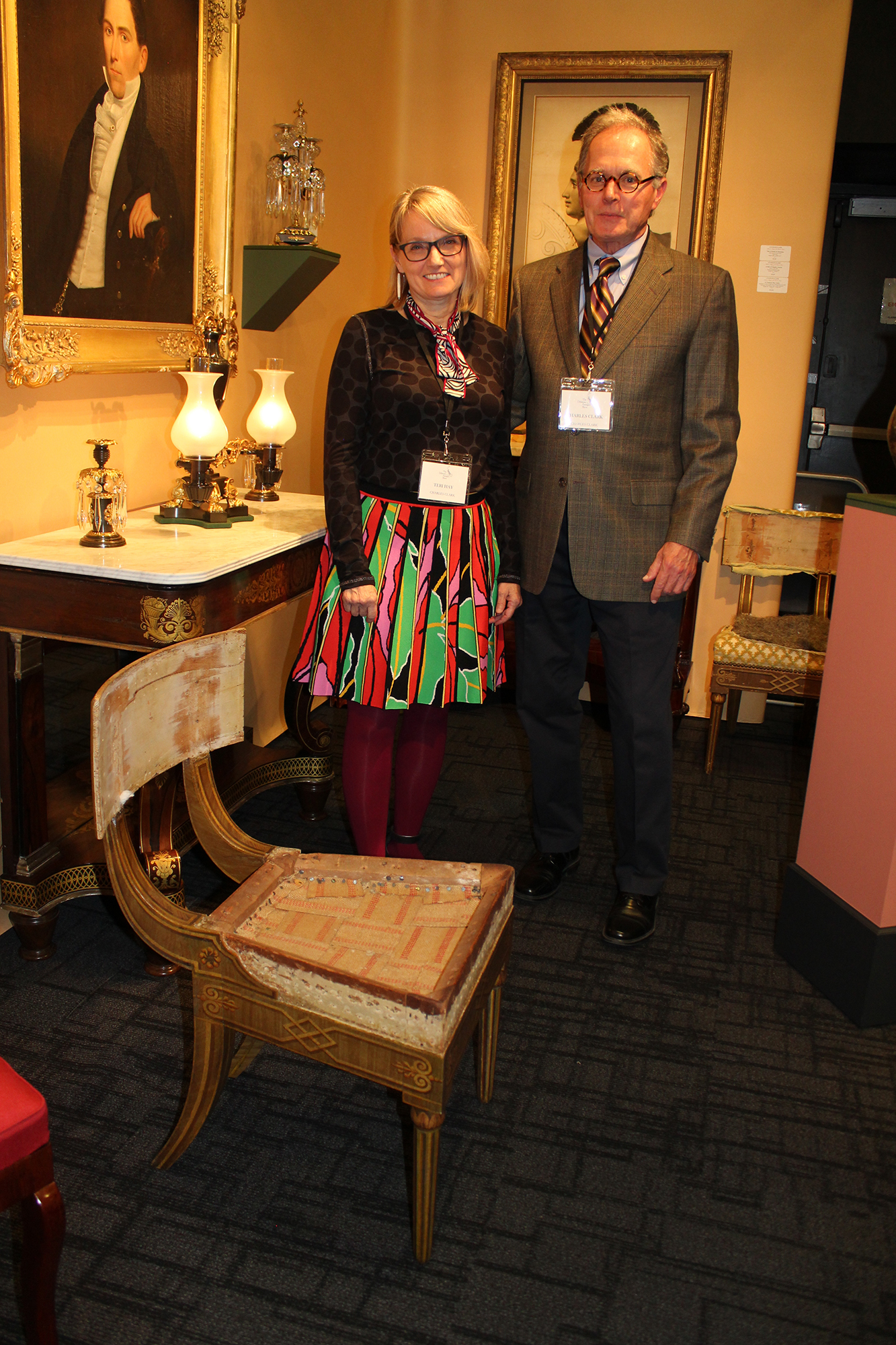
.jpg)
.jpg)
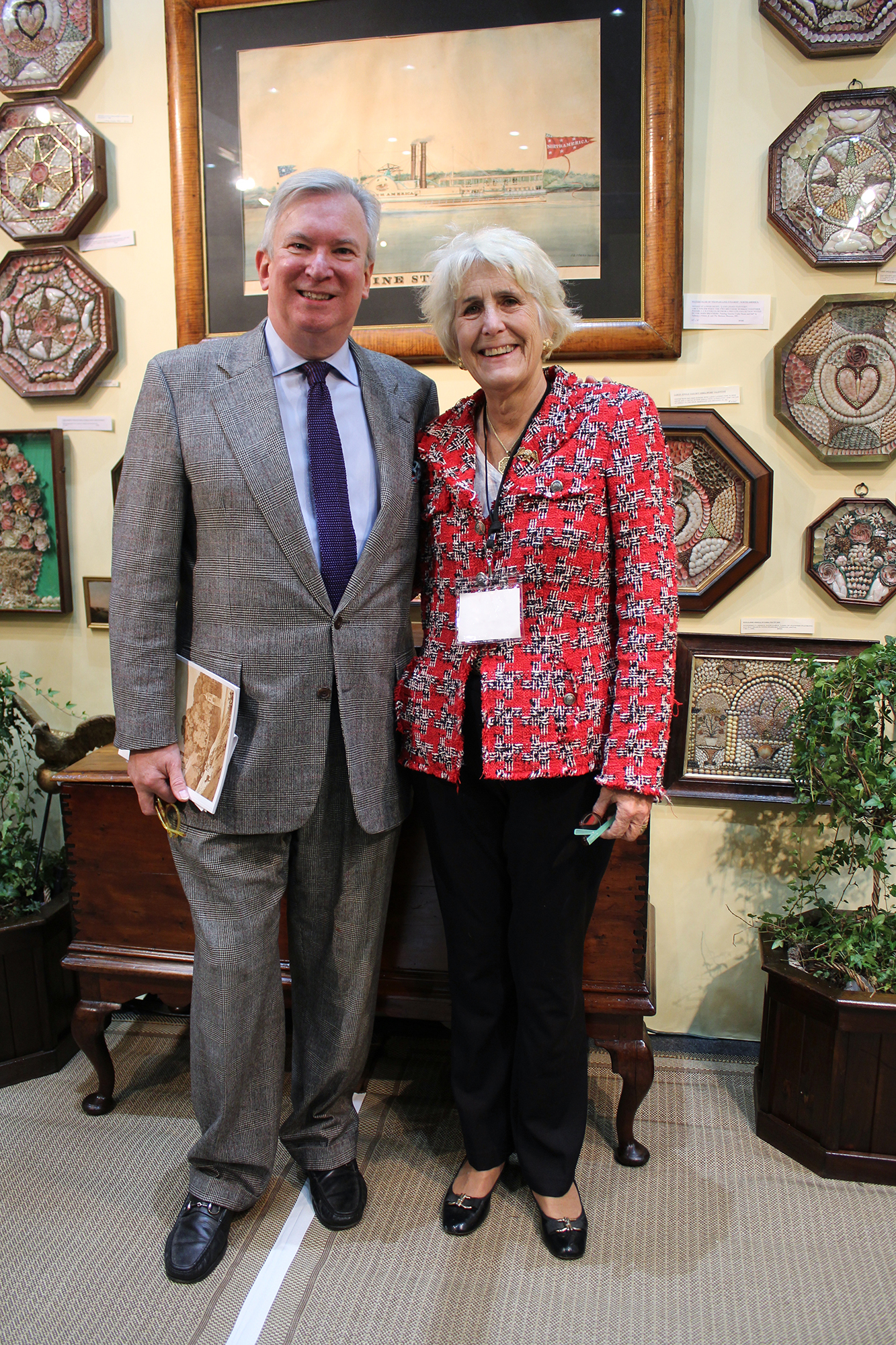
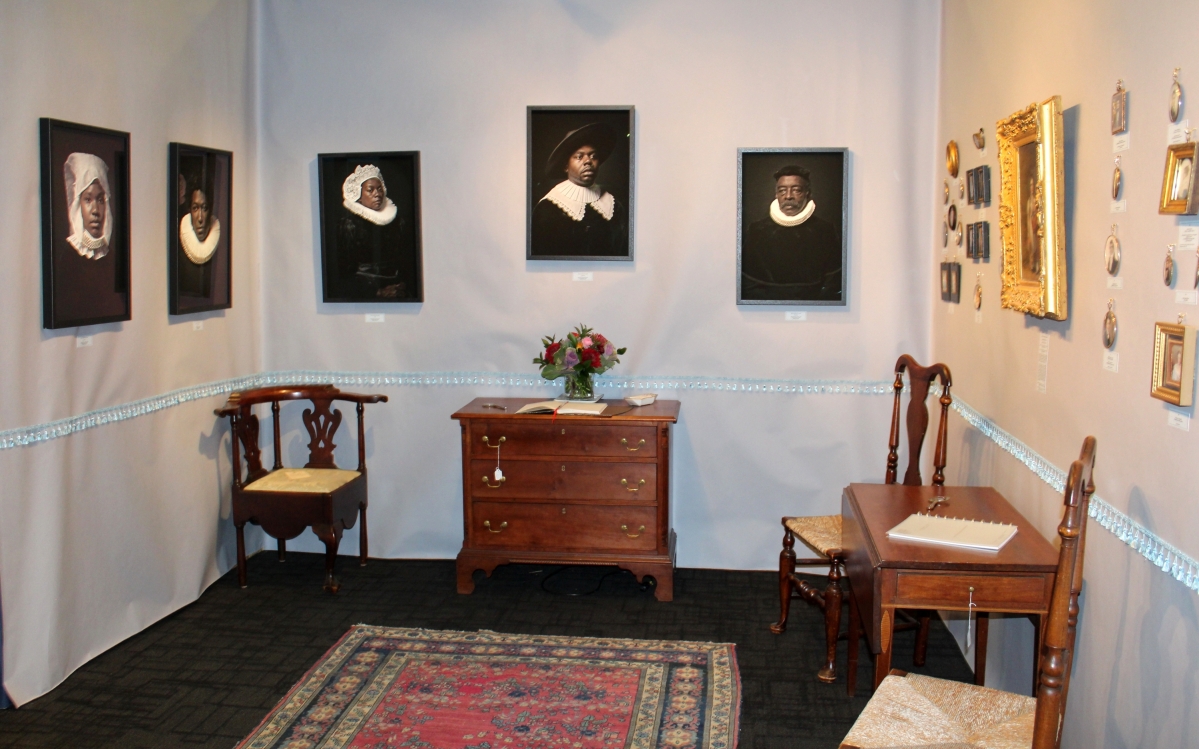
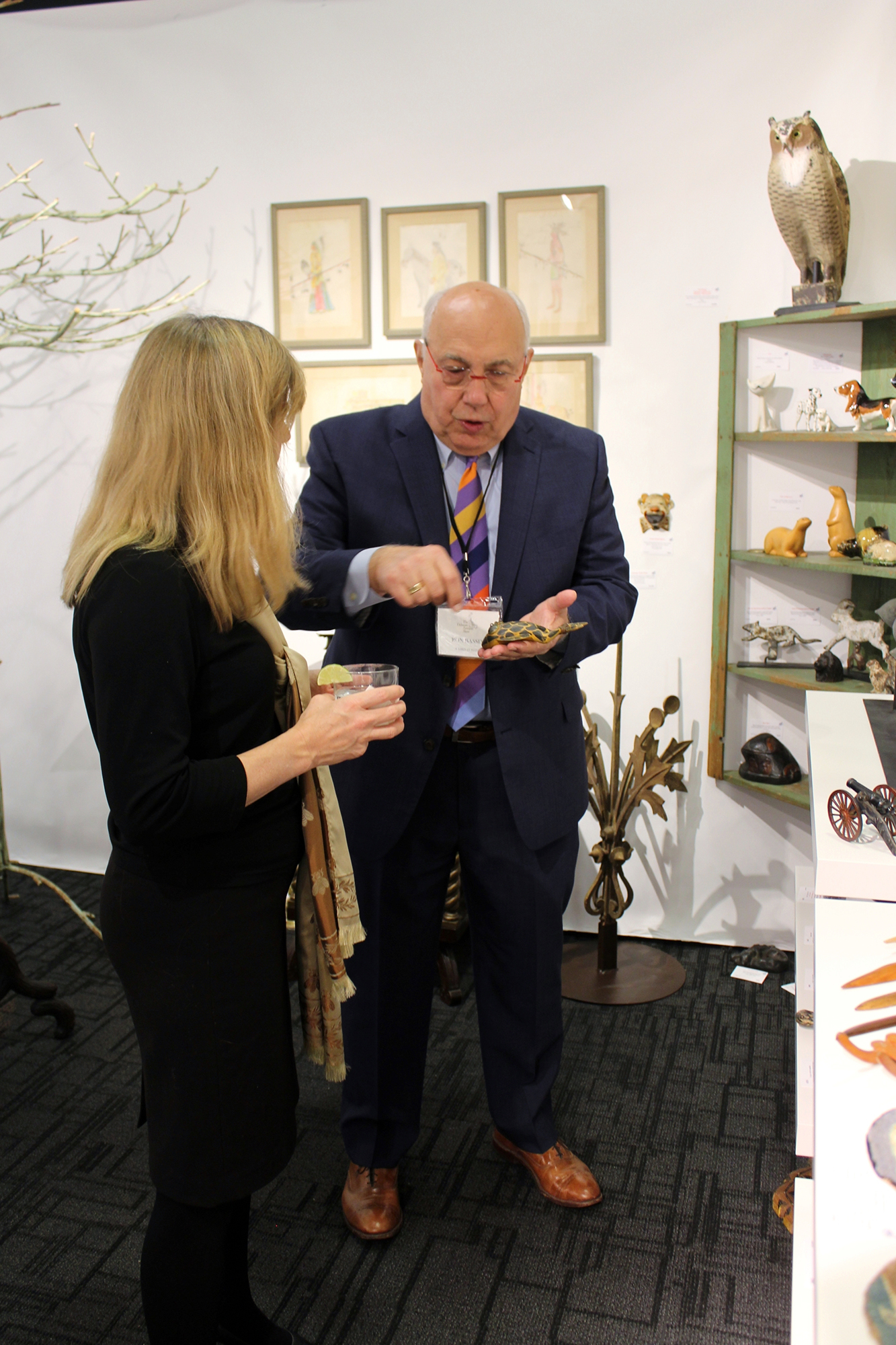
.jpg)
.jpg)
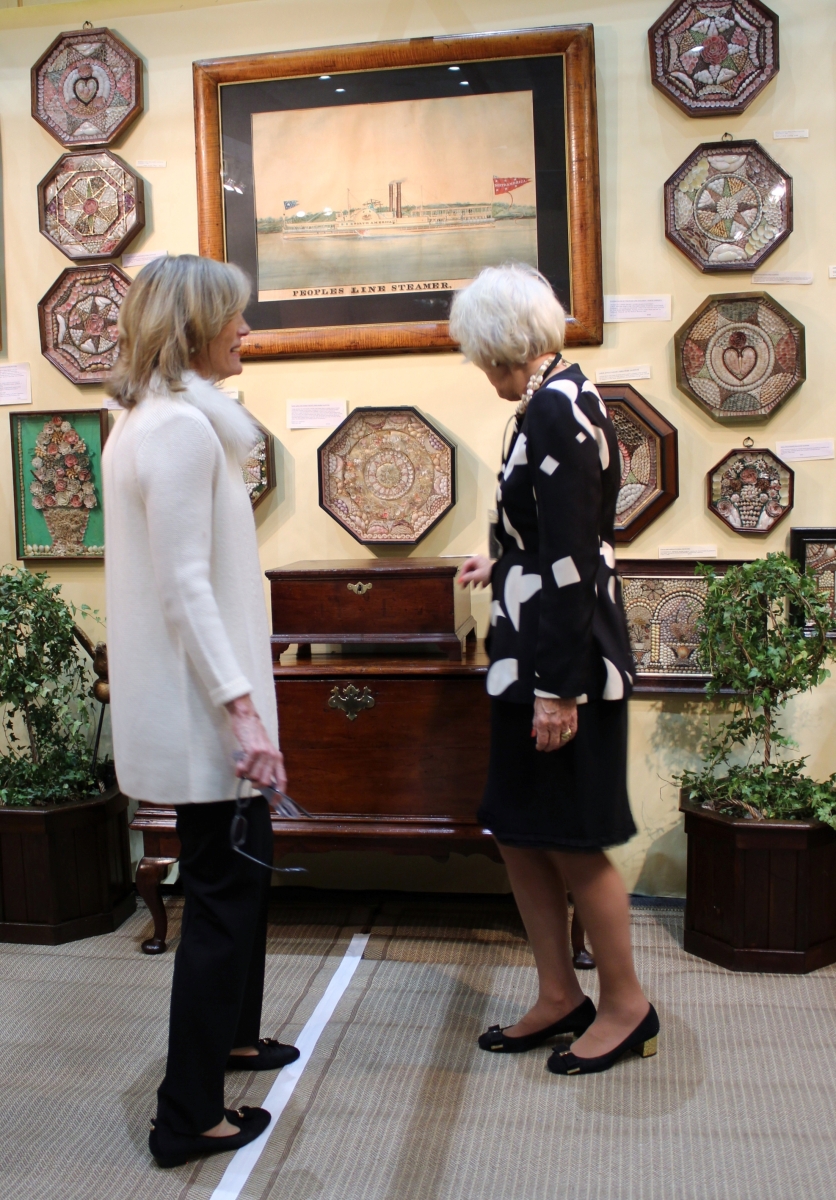
.jpg)
.jpg)
.jpg)
.jpg)
.jpg)
.jpg)
.jpg)
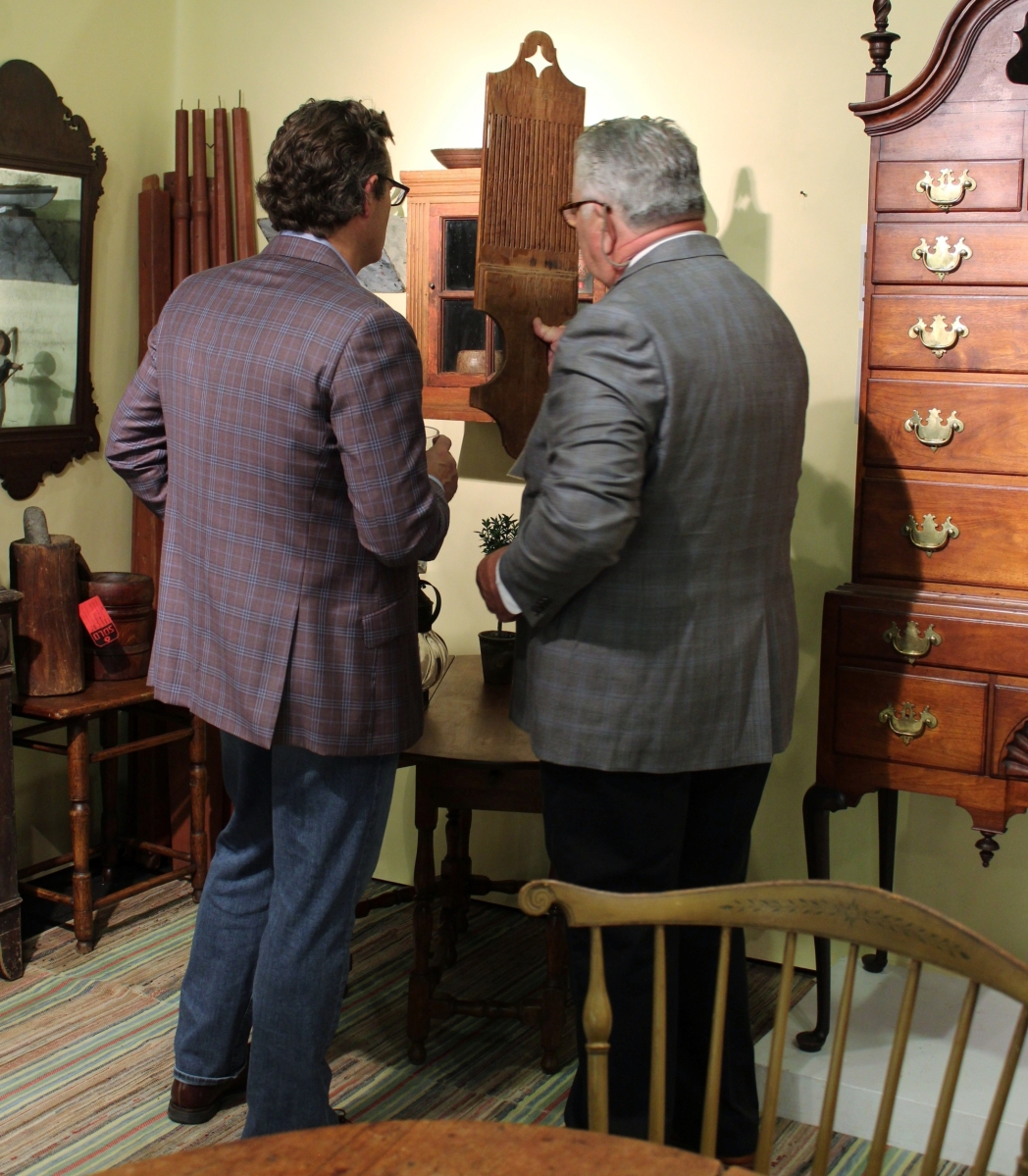
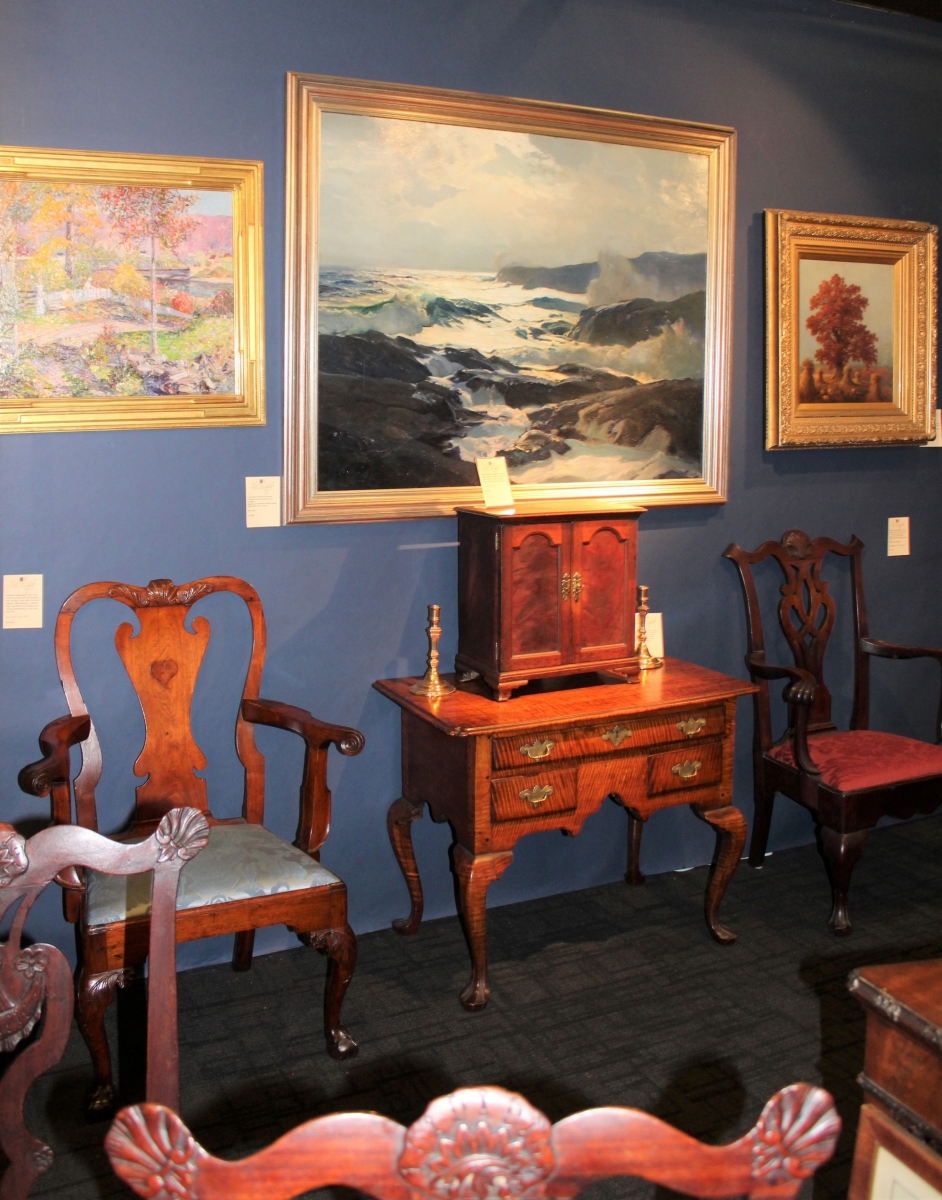
.jpg)
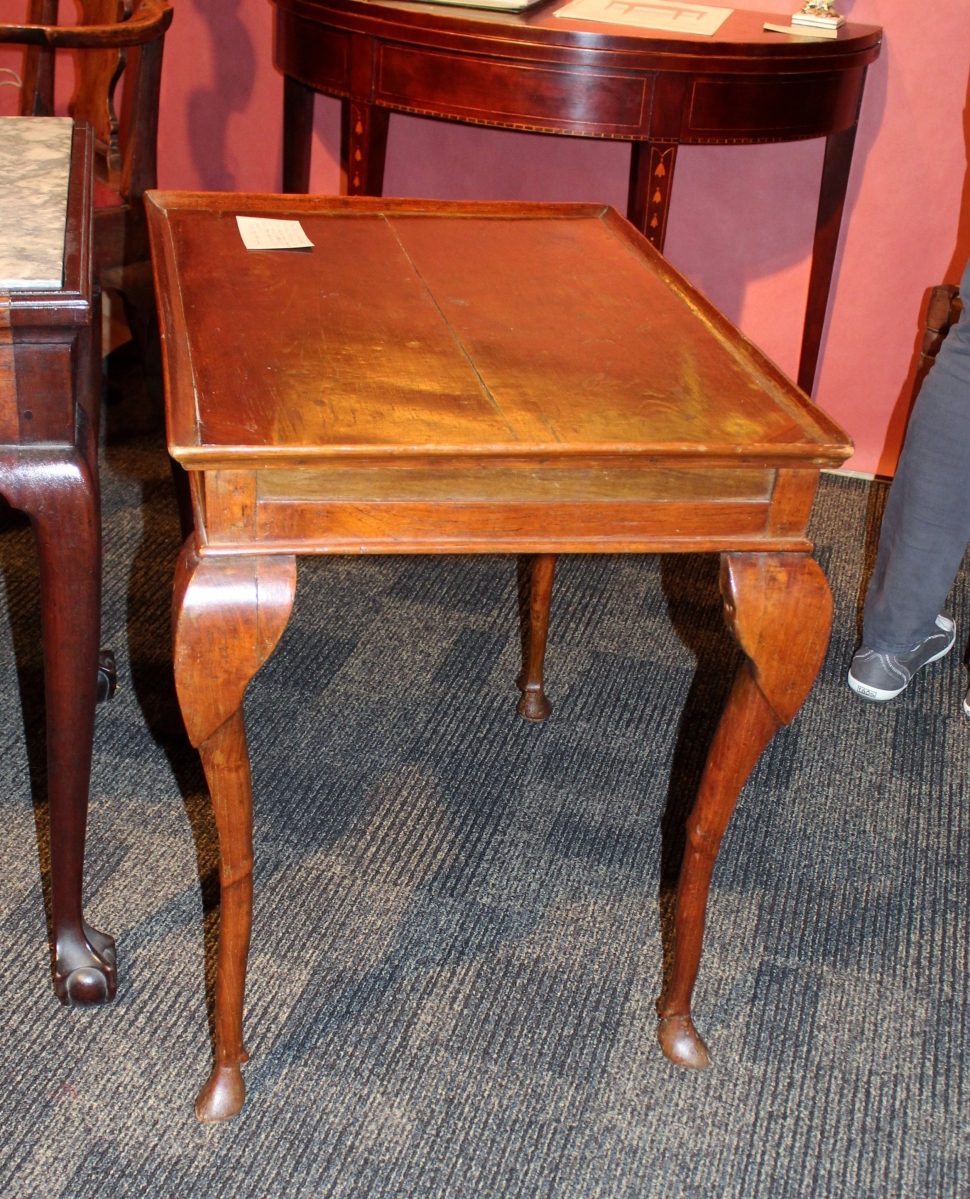
.jpg)
.jpg)
.jpg)
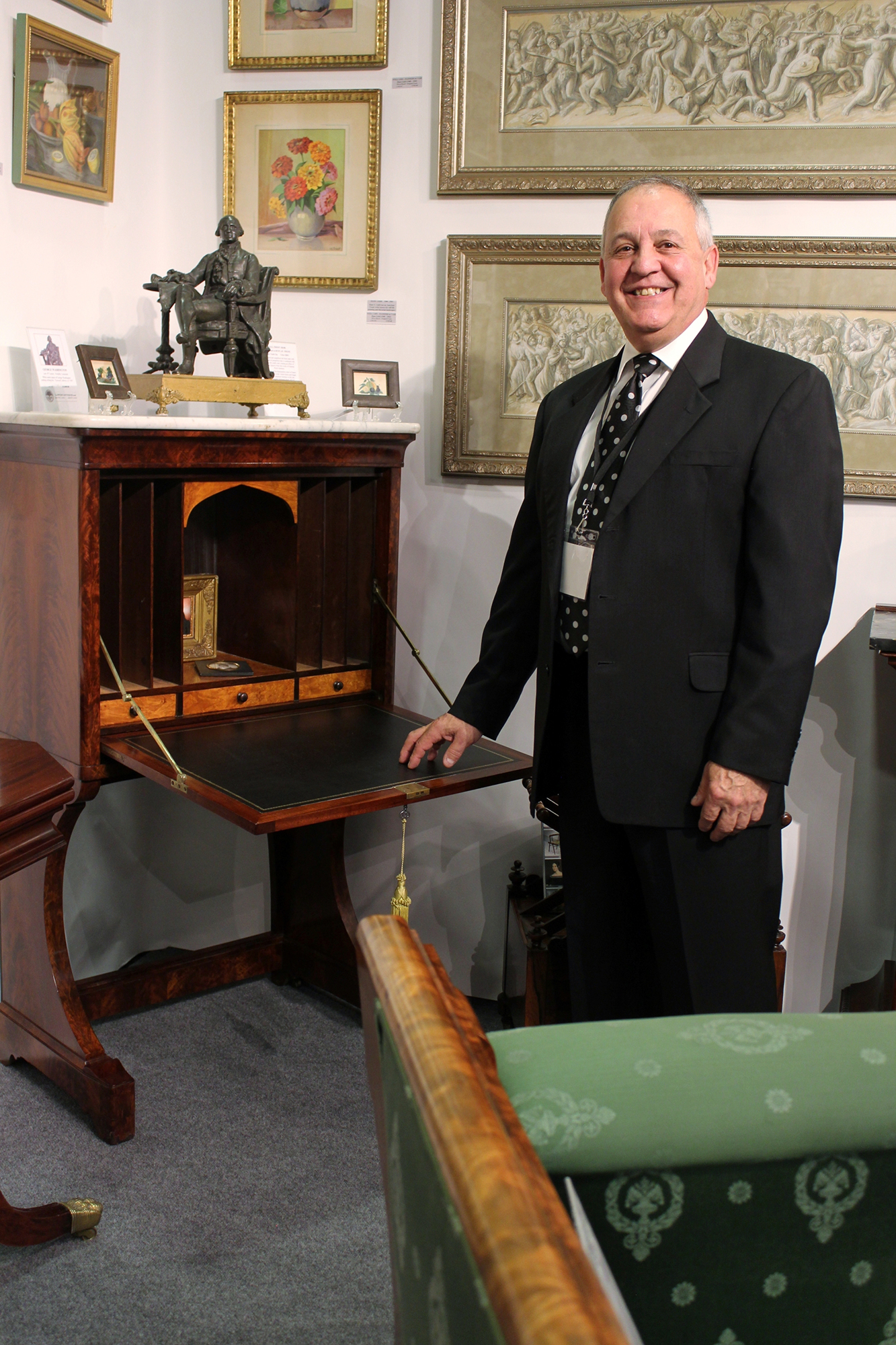
.jpg)
.jpg)
.jpg)
.jpg)
.jpg)
.jpg)
.jpg)
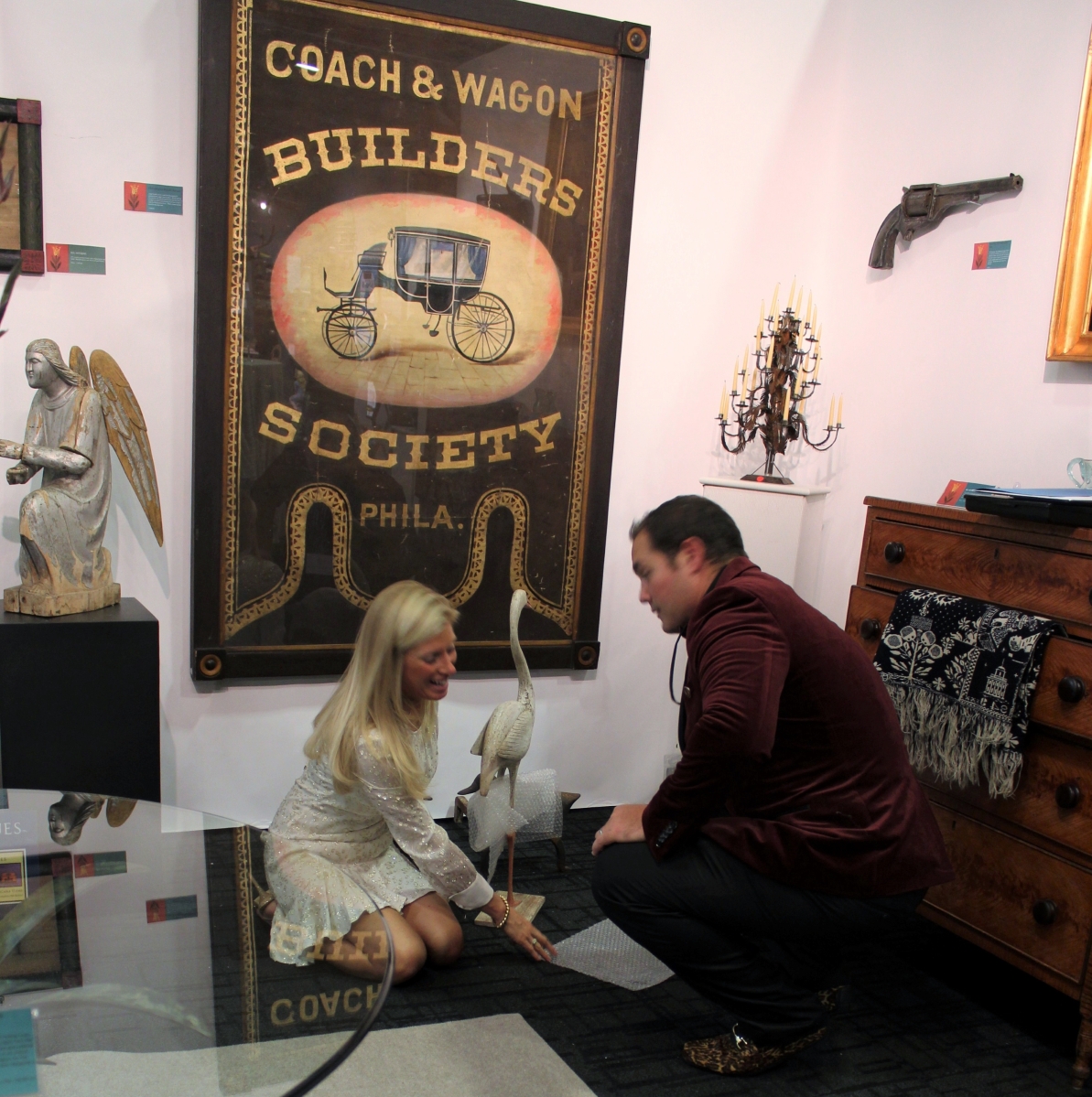
.jpg)
.jpg)
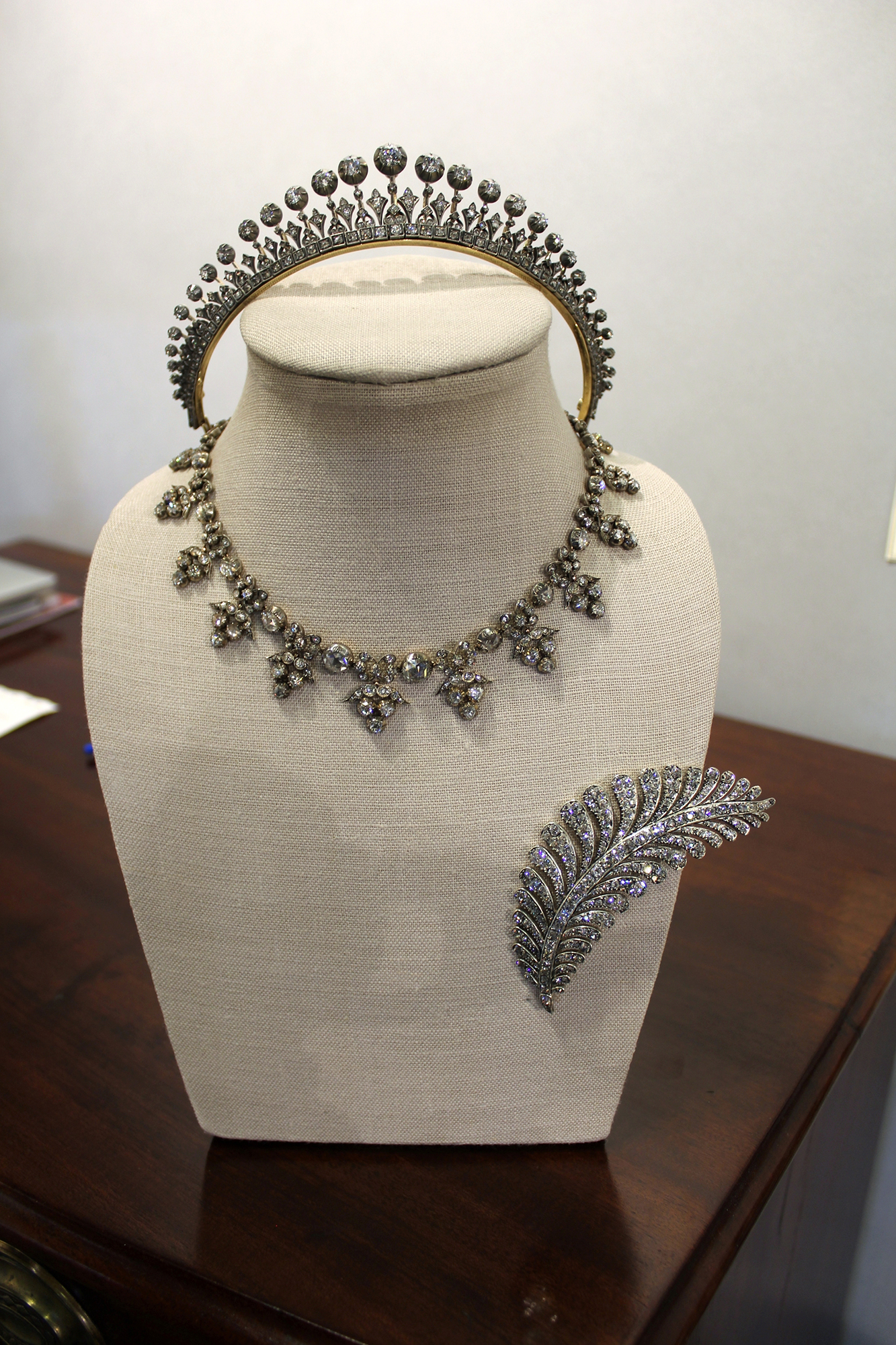
-e1574805742804.jpg)
.jpg)
.jpg)
.jpg)
.jpg)
.jpg)
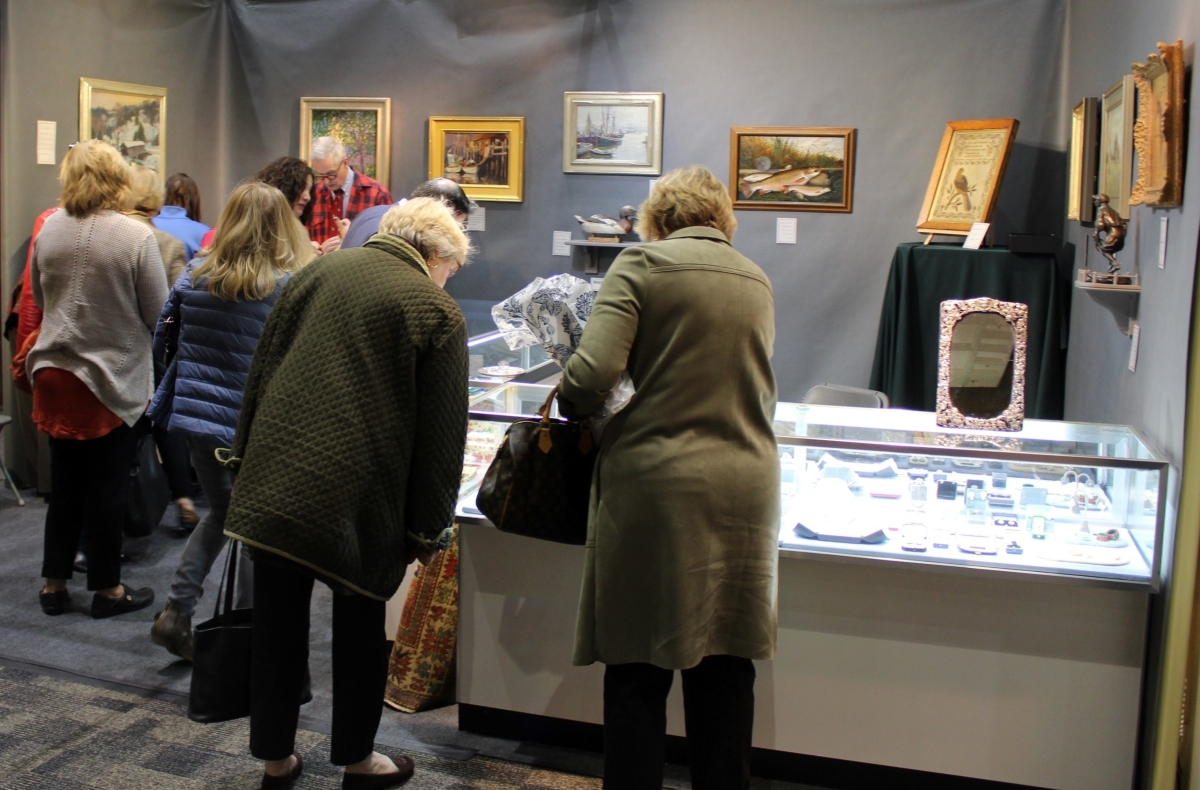
.jpg)
.jpg)
.jpg)
.jpg)
.jpg)
.jpg)
.jpg)
.jpg)
.jpg)
.jpg)
.jpg)
.jpg)
.jpg)
.jpg)
.jpg)
.jpg)
.jpg)
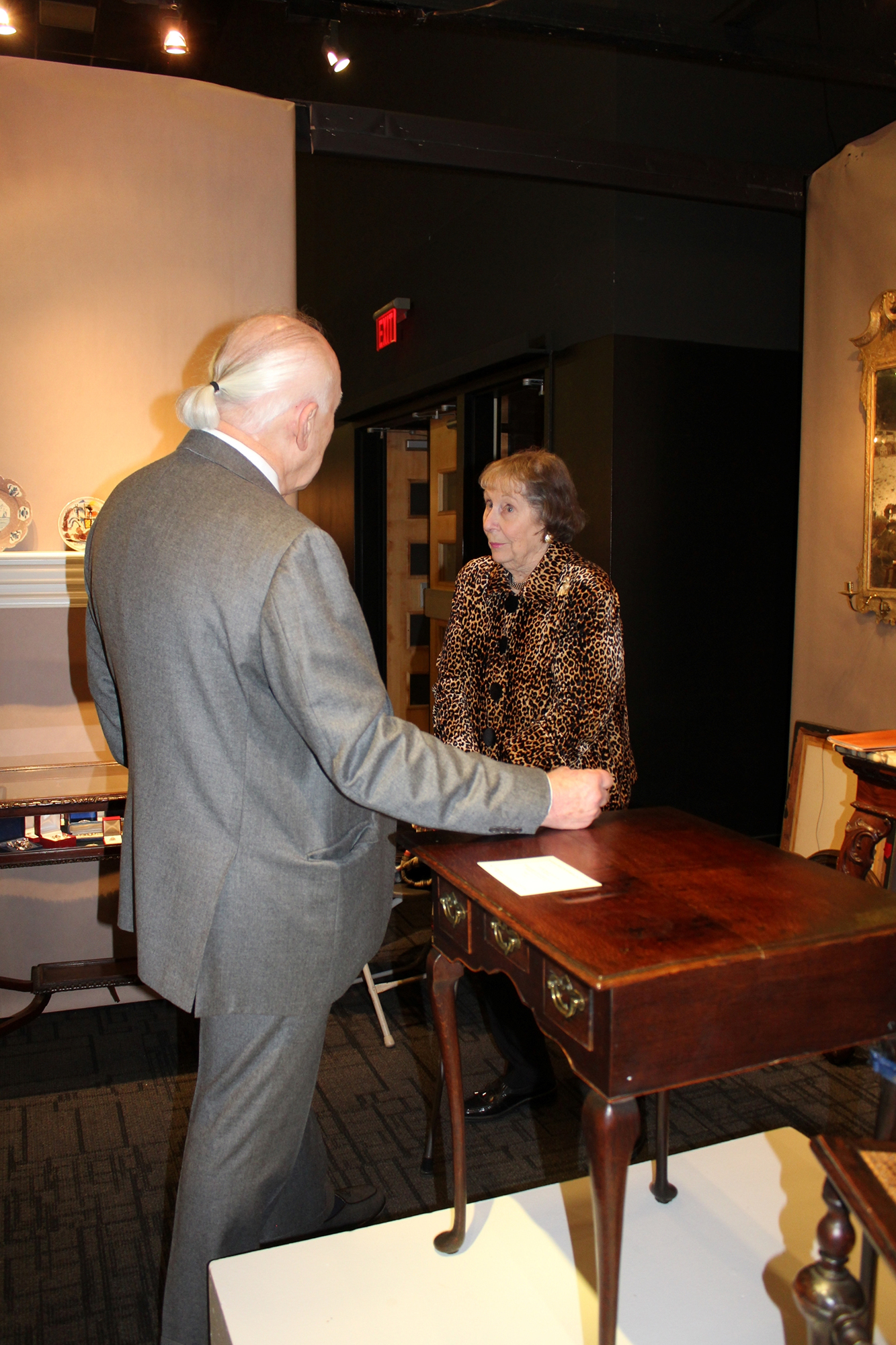
.jpg)
.jpg)
.jpg)
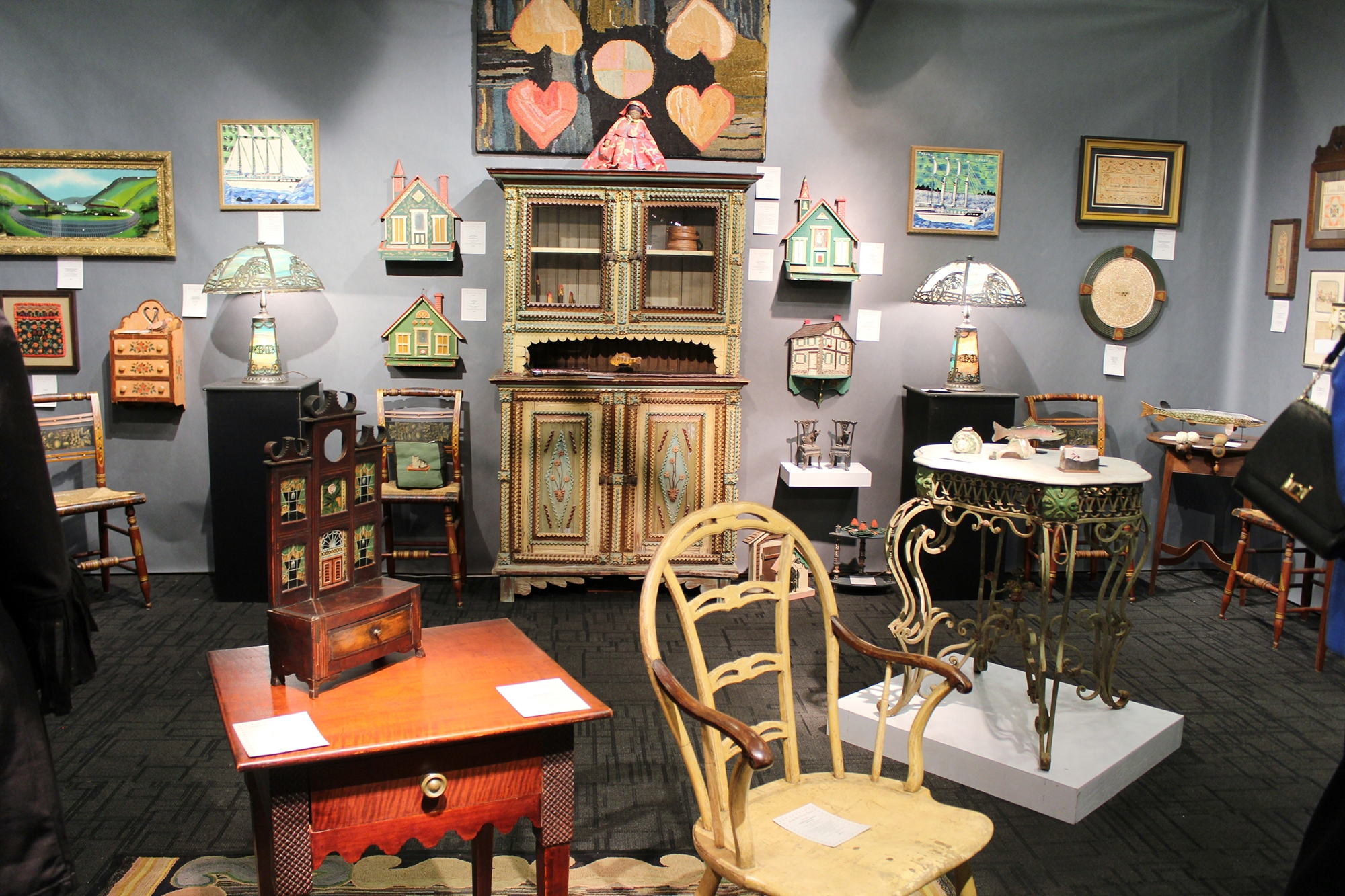
.jpg)
.jpg)
.jpg)

